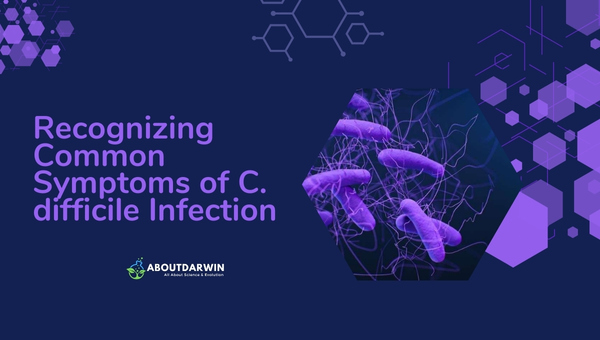Physical Address
304 North Cardinal St.
Dorchester Center, MA 02124
Have you ever heard about Clostridium difficile, or, as some call it, C.difficile? If you’re in the health and science fields, chances are you have. However, for those who aren’t familiar with it, allow me to introduce this significant microscopic organism.
C.difficile is a bacterium that’s creating quite a buzz within the medical community due to its impact on human health. As an expert in biochemical testing and identification of harmful bacteria like C. diff., I wanted to help demystify this pathogen by shedding light on how we identify it and why it’s so important for us to do so.
Contents
C.difficile is notoriously resistant to a number of antibiotics and causes several health problems. Its growth in our bodies typically occurs after prolonged antibiotic use when gut flora balance is disrupted.

But how can we detect it? By engaging in biochemical testing – that’s how!
| Basic Characteristics | Properties (Clostridium difficile) |
|---|---|
| Hemolysis | Negative (-ve) |
| Shape | Rods |
| OF (Oxidative-Fermentative) | Anaerobic |
| Flagella | Flagellated |
| Catalase | Negative (-ve) |
| Gelatin Hydrolysis | Positive (+ve) |
| Gram Staining | Positive (+ve) |
| Indole | Negative (-ve) |
| Nitrate Reduction | Negative (-ve) |
| Urease | Negative (-ve) |
| Oxidase | Negative (-ve) |
| Capsule | Capsulated |
| Spore | Positive (+ve) |
| H2S | Positive (+ve) |
| Motility | Motile |
| VP (Voges Proskauer) | Negative (-ve) |
| Fermentation of Arabinose | Negative (-ve) |
| Fermentation of Cellobiose | Positive (+ve) |
| Fermentation of Dulcitol | Variable |
| Fermentation of Fructose | Positive (+ve) |
| Fermentation of Galactose | Negative (-ve) |
| Fermentation of Glucose | Positive (+ve) |
Today, I am diving into one of the significant bacteria we deal with, Clostridium difficile. Commonly known as C. difficile, it’s a bacterium that causes inflammation and severe diarrhea. Living in the human intestine without causing any issues is its natural mode unless provoked by antibiotics.
C. difficile is unique due to its ability to create spores that are resistant to typical cleaning methods and harsh conditions.
These spores make it extremely contagious and are linked to prolonged healthcare facility stays and increased costs for care providers and patients alike, not to mention patient discomfort or worse. Understanding C. difficile further becomes undoubtedly vital for our health ecosystem.
Also Read: Mastering Polymerase Chain Reaction: Principle & Application
Biochemical tests serve as a fundamental diagnostic tool in the realm of microbiology, allowing researchers and clinicians to unravel the complex identities of various microorganisms.
By examining the metabolic and enzymatic activities specific to different bacteria, these tests offer a roadmap to pinpointing the precise nature of an unfamiliar pathogen.
Here are the key steps required when performing a biochemical test to identify Clostridium difficile:
The process starts with collecting a stool sample in appropriate conditions, primarily from individuals showing symptoms like chronic diarrhea or abdominal discomfort.
The collected samples are then cultured in an anaerobic environment ideal for the growth of Clostridium difficile.
After sufficient growth, colonies resembling those characteristic of C. difficile (large, flat, and yellowish) are selected for further tests.
A microscopic statement of gram-stained culture is checked to confirm Gram-positive rods, identifying as potential C. difficile.
Post initial selection based on morphology, biochemical tests like citrate tests, molecular assays, or glutamate dehydrogenase (GDH) tests, among others, could be used to recognize the presence of toxins linked to this bacterium.
The findings from these examinations provide evidence that either confirms or refutes the presence of Clostridium difficile in the sample supplied.
Remember, though, these steps are representative, and depending upon case specifics & lab protocols, certain additional step(s) might be undertaken to ensure accurate identification.
Also Read: DNA: Differences Between Replication and Transcription
Recognizing the symptoms of a C. difficile Infection could potentially save you or a loved one from serious complications.

The common signs that indicate a person might have been infected with C.difficile include:
Take note these symptoms may vary among individuals, and it is important to seek medical attention if you experience any such symptoms.
A C. diff infection refers to a bacterial infection caused by Clostridium difficile that leads to symptoms such as severe diarrhea, abdominal pain, and fever.
It’s typically diagnosed through a stool test to detect the presence of C. diff toxins or spores in the affected person’s system.
In the context of bacteria, biochemistry helps us understand the chemical reactions taking place inside these organisms. This understanding proves crucial in developing diagnostic tests and treatments for bacterial infections.
Yes, there are several strains of Clostridium difficile, some more virulent than others, causing severe illness or even being drug-resistant.
The incubation period varies, but symptoms usually start appearing within a week after exposure or antibiotic treatment initiation.
Also Read: Serratia Marcescens: Biochemical Test & Identification
As we dive deeper into discussions around Clostridium difficile, I hope you’ve gained a wealth of understanding.
Grasping the knowledge from its characteristics and implications to the various biochemical tests employed for its detection is crucial in combating this public health menace. It all starts with recognizing that something as simple as bacteria can have far-reaching impacts.
And while we’ve covered a considerable bit here, always remember: our battle against diseases like C. difficile is ongoing. Pivotal breakthroughs might happen tomorrow.
Therefore, keep an eye on scientific discussions and studies around these topics and ensure you follow all healthcare guidelines to protect yourself and those around you against such infections. Knowledge, after all, plays a significant role in promoting health and preventing disease.